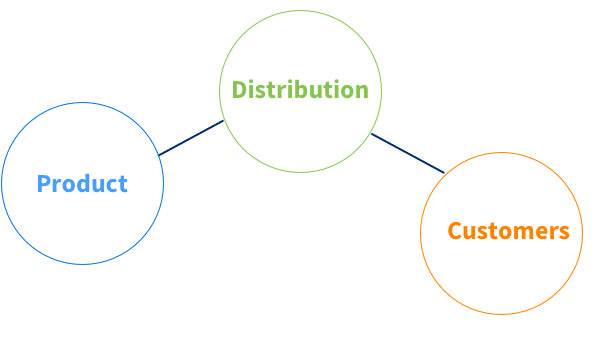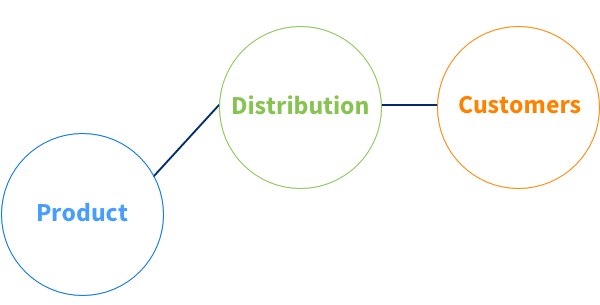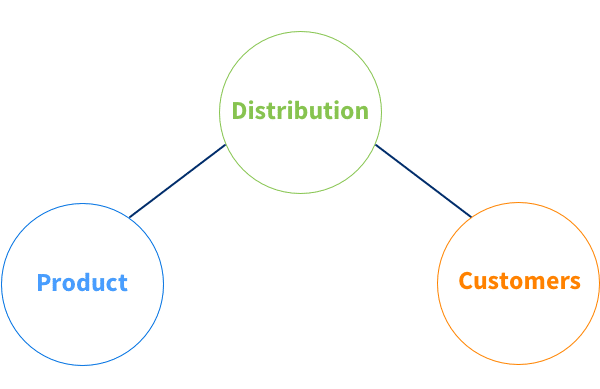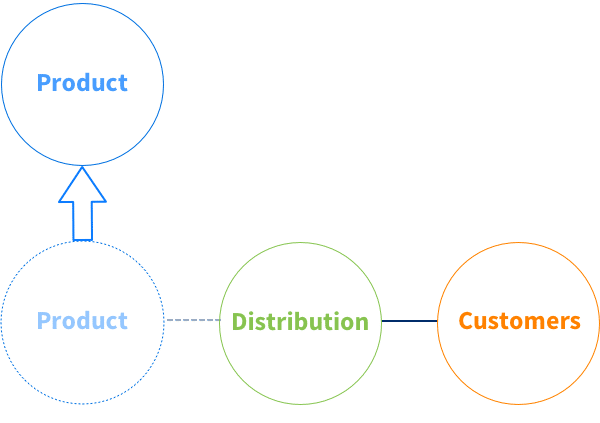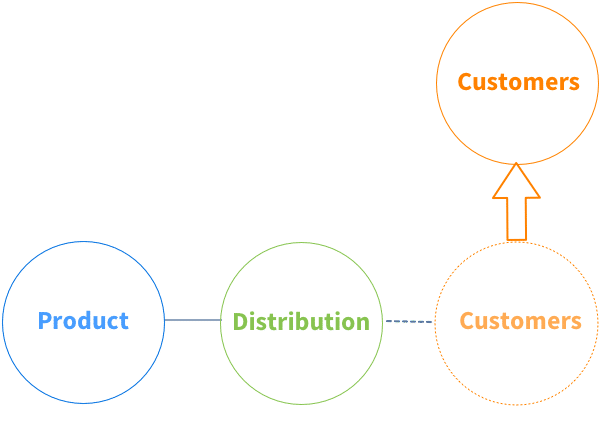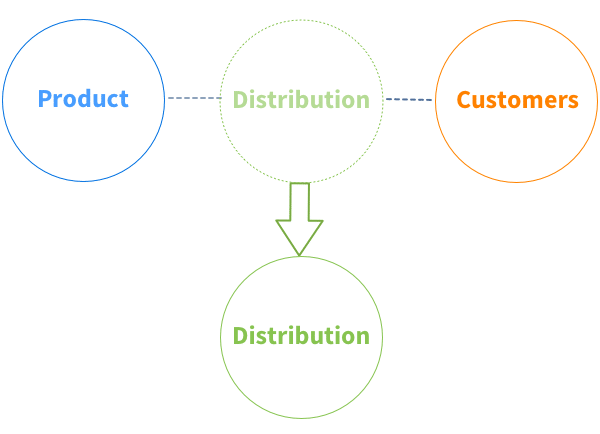
Just a few years ago, marketers everywhere rejoiced. Shouts were heard from the rooftops. Glasses were raised. Toasts were made. Reliable marketing metrics were finally here! Definitions were set, processes were tested, sales and executives bought in across the board, and the panacea of the Lead Marketing Funnel brought peace to all.
Or did it? Did we just end up confusing things?
The one thing we know for sure is that we introduced some new terms (not to say buzzwords) that needed to be debated and defined, so we could make them part of our strategies.
Marketing Qualified Lead (MQL)
The term is broadly used across marketing and sales. Marketing teams are judged by the numbers of MQLs they generate. Business development reps have service level agreements (SLAs) in place about how quickly reps must respond to MQLs.
Pipeline impact of MQLs is measured, spliced, diced, pureed, and spit out in board presentations across the globe. MQL to Sales Accepted Lead (SAL) ratios are touted as exceptional by marketing teams, eyed suspiciously by sales teams, and eyeballed by executive teams who say “just show me the opportunity pipeline.”
Beyond buzzwords
But what exactly is an MQL? What does SAL mean? How about a Sales Qualified Opportunity (SQO)? How are we supposed to use these terms to get things done?
The answer, as it generally is in these days of data overload, is it depends. It depends on YOU. It depends on your sales, sales operations, and marketing teams getting together and defining the term appropriately for your business, and being able to explain it simply to your executive team.
Great marketing and sales teams do this well. They don’t speak marketing-ese, they use the terms to define their own business processes, the ones that increase the chances for success.
Let’s step back and take a look at ways you can do this. Let’s define aspects of the terms MQL, SAL, and SQO in a way that allows you and your team the best chance for success.
Defining MQLs
At its simplest, a “marketing qualified lead” is a lead that has met some benchmark(s) that identifies it as having enough potential to warrant attention from your marketing department. It’s met the first, most basic level of qualification that your sales and marketing teams have agreed on.
How might you make that determination? Which factors should you look at?
We have a bias, in terms of Marketing Qualified Leads. We truly believe, and understand through analysis, that the ability to have an educated and effective sales conversation by email, phone, or socially is the key to transferring marketing influence into opportunity. So the variables that we look for are the variables that increase the rates of having a good conversation.
There are four categories of variables we’ll look at:
- Profile
- Channel
- Actions
- Undesirables
Profile
The first thing to understand is the profile of the type of lead that you want. Who are the individuals at organizations that you want your team to interact with, whom you’re most likely to have an intelligent conversation with? Who does the sales team recommend as the buyer in their organization?
Outline the basic profile of what marketing should gather about the person to consider it marketing qualified. The basics should be:
- First name
- Last name
- Title/role
- Organization
- Contact info: email, direct dial number
- Size and type of organization, and perhaps location
It’s also desirable to get the social network information whenever possible: Twitter handle, LinkedIn profile, and so on, depending on the social patterns of your most desirable customers.
The name and title are generally not negotiable. You need that information for a lead to be “Marketing Qualified.”
You need to start to weigh and make decisions upon the rest of the information. How important is the size of the company in determining if the lead is marketing qualified? How important is receiving a direct dial number to your sales team, or do you interact more via email or social? Is there any reason for location to matter?
Break out each of these fields and determine the minimum acceptable level of profile information that a lead needs for marketing qualification. Publish this in some way: it might be part of your internal communications, or it might become memorialized as part of a service level agreement. Just get it in writing, and make sure both sales and marketing agree. It doesn’t mean sales can’t call on a lead if it doesn’t have all the profile information; it just means that marketing isn’t giving a specific endorsement saying “we think we have great information for you.”
Note: I’ve seen organizations try and understand a person’s purchasing power or interest level via the profile data. More often than not, the data you get within this spectrum of role definition is not a highly reliable indicator of interest or power. That information can be gotten and used, but not usually at the MQL stage, and not through these fields. Stay tuned.
Channels
The second thing to recognize is that your potential leads are spending time in multiple channels, and you need to identify those channels for your organization. There are thousands of channels, and most of them overlap in some way. For the sake of this discussion, I’ll organize them according to the following highly simplified buckets.
- Inbound (direct form fills)
- Event marketing leads (webinars, in-person events, cards in a fishbowl at a tradeshow)
- Interaction-based
Inbound leads are garnered in a variety of ways. Content form fills, contact requests, paid search form fills – you name it, there is a way to fill out a form. The important thing here is for both sales and marketing to understand the exact channel the inbound lead is coming in from, and agree upon the relative importance. Not every form fill is equal.
For example, I just received a call the other day from an unnamed CRM vendor. I have high interest in CRM products, love to study the market, and probably exist in every CRM vendor’s CRM as an MQL somewhere. The type of content I filled in the form for was extremely educational. However, the form didn’t have any field asking whether I wanted to buy anything. Sales and marketing should agree on the types of content they want to follow up on aggressively (an MQL) and the other types that they want to nurture for a while. Since they hadn’t qualified my degree of interest, they would have been safer to assume I could use some nurturing before getting a call asking me to buy.
Event-based leads are similar. It’s hard to classify all of them as MQLs immediately. You need to look at the nature of the event and the actions that they took at the event. Sales and marketing should agree on the events and profiles where some factor indicates that immediate follow-up is necessary, and mark these as MQLs. Others should be nurtured in the lead funnel.
Interaction-based leads is the category that has the most gray area for marketers to deal with. Technically, we can look at and classify someone as an MQL just by the actions they took, and the interactions with our brand. This is something that should be discussed directly with the sales team.
- Is it enough to classify someone as an MQL if they never gave us their information willingly but interacted across multiple channels?
- Are there specific channels or engagement actions that identify an MQL?
In some industries, these are actually the best leads. In others, they are very hard to contact. You need to test this and agree upon it with your sales team about whether or not these should be delivered as MQLs. The answer will be different for every organization.
Actions
In defining MQLs, it’s very important to understand not just the profile and the channel, but the actions that individuals took to become an MQL.
Online is generally the easiest to measure. We can look at and easily score online interaction. How many emails did they click through? How many web pages did they look at? Did they visit our pricing page? Did they fill out a demo form?
For inbound and interaction-based MQLs, this has been raised to a science and an art. We can track very specific actions, define them, and agree with sales upon what we think are the most important in driving conversations. We can score them, and watch as advancing scores indicate increasing interest.
For events, these are sometimes a bit tougher. Many times all event leads are treated equal. But you should consider multiple variables.
- Did they both register and attend a webinar?
- If they attended, for how long? Did they stay for most of it?
- At a trade show, did they speak directly with someone? Did they ask for a follow-up?
- Were they an attendee at a specific seminar?
These are sometimes harder to track, but to provide the accurate lead history, this is important.

Undesirables
For all of the desirable actions, channels, and profile aspects you define, you should also look at the undesirables.
Don’t just look at the positive, look at the negative attributes.
Are you a B2B organization? Do you want your teams following up with people that are masking their identity with “@gmail.com” email addresses? Is it important to weed out the procurement titles?
Look at each of the categories, and make sure you look at these undesirables, and document them accordingly.
Lead Scoring for MQLs
If you look closely at the categories, you’ll notice that all of the items defined can be leveraged in lead scoring.
Each of the attributes or actions that you define together with sales can be translated into a lead score, giving you the ability to score an MQL appropriately, and dynamically. You can set your marketing automation platform to take specific actions with leads that reach a certain score, such as sending them to sales with an MQL tag.
In communicating this to all stakeholders, you can easily define each lead by profile, channel, and actions. That way all parties know what an MQL actually is, and agree upon it.
Sales Accepted Leads
At its simplest, a “sales accepted lead” is a lead that sales has agreed meets benchmark(s) that sales and marketing have defined as warranting attention from sales.
Because you’ve communicated the profile, channel, and actions that make up the MQL lead score, and presented the lead to sales in the context of their CRM, sales is now able to make a good decision on whether or not to accept the lead.
There are three major criteria that exist here for sales to accept the lead.
- The lead meets your MQL requirements, and sales can see that
- Sales is able to initiate a conversation
- This person is at a firm, and in a position, that makes it legitimately possible that at some point they may want to do business with our firm.
For most B2B firms, that’s it. For others, where the sales cycle is short and deal size is small, you should have buying time and authority in the mix.
However, the goal of sales at this point is to have a conversation to learn more about the individual, deepen the relationship with the brand (not crush it), and set the stage for further conversations.
This takes a talented sales team and training. The good news is, it works and generates ROI. When marketing does a good job of setting the stage for a conversation, well-trained sales teams can deepen that and drive positive interactions.
This lead may get passed back to marketing over time, or go through multiple cycles, but every time sales accepts the lead they should be gathering additional critical information that can help them serve the customer in the future, and help marketing serve the customer more effectively with targeted content.
You now know that every lead sales has accepted is a potential client at some point, and that you’re working your tail off to serve them better.
Note: This definition sometimes flies in the face of our “give me results NOW” mentality in business. But the truth of the matter is that business is about relationships. Relationships sometimes take time. By accepting a lead early, and learning more about them, it gives both sales and marketing time to develop that relationship.
Sales Qualified Opportunity
At its simplest, a “sales qualified opportunity” is a lead that sales has worked with enough to believe the lead has a high potential of closing. Every sales team in every company must create its own criteria.
Defining an SQO from an SAL can be a simple process. The simplest way to define this is to check whether we know the following things:
- There is a legitimate buy cycle in place – whether that takes 1 day or 2 years doesn’t matter
- We are talking with an influencer in that buy cycle
- We have a time frame for that buy cycle
- We know the size of the opportunity
- We have permission to follow-up with next steps
If these items are known, an opportunity should be created in the CRM, no questions asked. If this was generated by the MQL to a SAL to the SQO funnel, then sales, marketing, operations, and executives should all see this as a win.
Some teams layer on budget into this equation. We tend to see that as a step in the buy cycle, rather than necessary for initiating a potential SQO.
We lean toward capturing possible opportunities earlier in the buy cycle rather than later. It keeps sales teams more focused on driving towards results and the pipelines in view of all. It also allows us to better analyze the lead funnel cycle better earlier on, and prioritize. If certain channels, prospects, or activities are leading to SQOs that are not closing, we want to see that quickly, and vice versa.
Make qualification simple
It’s always easy to add layers and make things more complicated, but this adds time and cost, and doesn’t usually add to clarity. Use the framework provided to define things for your teams. Make this process as simple and clear-cut as possible, so you can see unambiguous results. If you don’t get the results you want, adjust the framework to change a criteria or a timeframe, until you are able to accurately filter MQLs that become SAL that become SQO.
Here’s a quick recap for you, and we’re always happy to chat and help you define these for your team.
MQL – Marketing Qualified Lead
- Important to look at leads by:
- Profile
- Channel gathered in
- Actions taken
- Undesirables
- Agreed upon traits and channels with the sales team. Documented by both teams
- Indicated to the sales team through lead scoring and leads presented in CRM
SAL – Sales Accepted Lead
- The lead meets your MQL requirements
- Sales is able to initiate a conversation
- It is feasible that this lead may do business with us
SQO – Sales Qualified Opportunity
Sales confirms from the SAL that:
- There is a buy cycle
- The person has influence
- We know the time frame and size of opportunity
- We have permission to follow up and next steps
And of course, the final step is closing that sale. Then we’re into a new lifecycle of retention, loyalty, advocacy, referral and upsell with that client – but that’s another post, for another day.
Happy marketing and selling!




 How accurate is your information? (Again, take this with a grain of salt.)
How accurate is your information? (Again, take this with a grain of salt.)
























 Unlike PPC, radio, or print ads, you won’t gain much momentum right away.
Unlike PPC, radio, or print ads, you won’t gain much momentum right away. Acquisitions are often celebrated in the press. But academic research suggests that 70 percent to 90 percent of mergers don’t succeed, owing to a wide variety of factors. Buyers overvalue the synergies they’ll derive, or they underestimate the impact of the associated costs, or they rely too heavily on assumptions about where a market is heading.
Of course, another reason…
Acquisitions are often celebrated in the press. But academic research suggests that 70 percent to 90 percent of mergers don’t succeed, owing to a wide variety of factors. Buyers overvalue the synergies they’ll derive, or they underestimate the impact of the associated costs, or they rely too heavily on assumptions about where a market is heading.
Of course, another reason… 

















